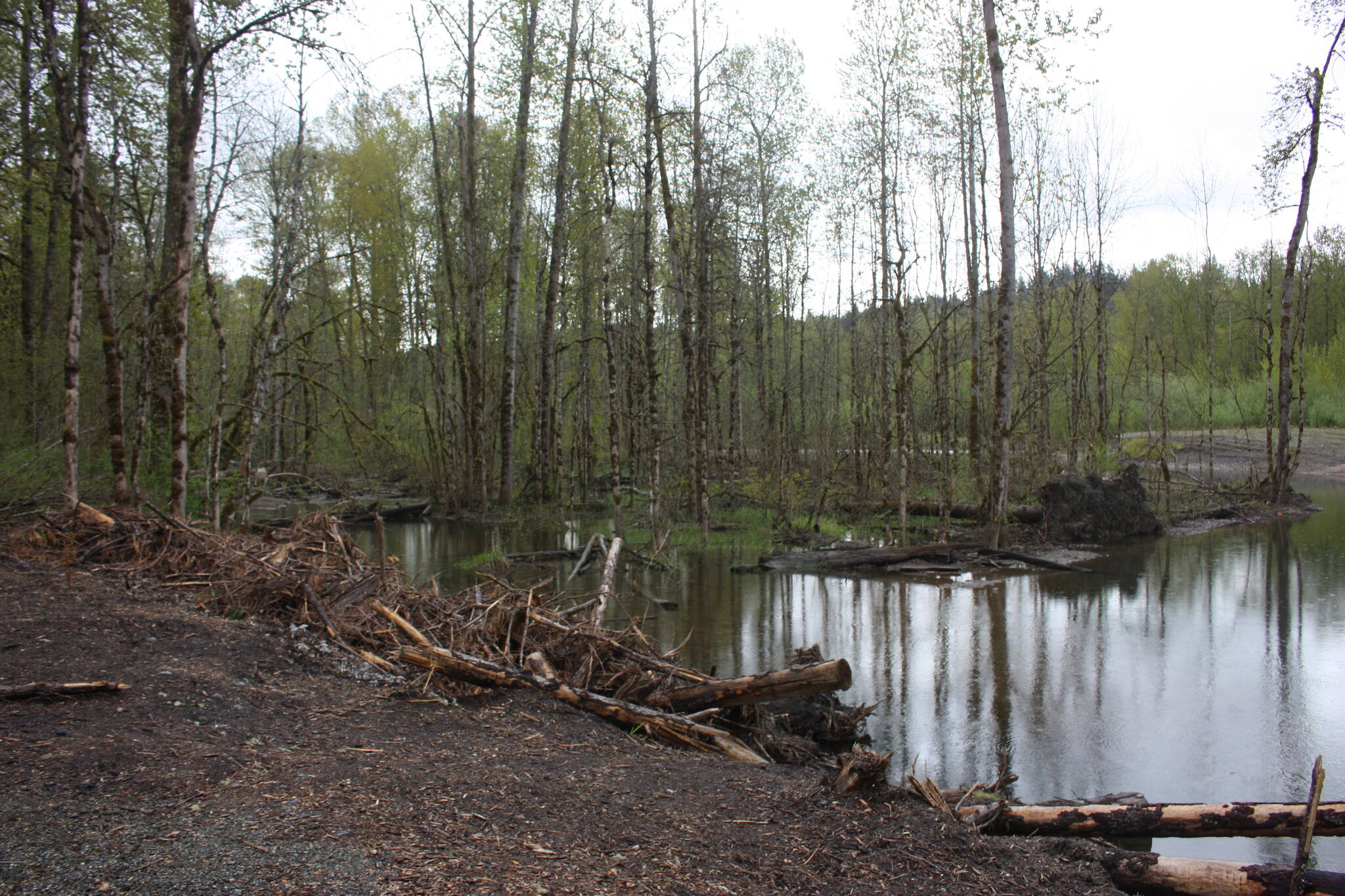Farmers in the Green River Valley did not consider the unintended impacts that building the Lones Levee would have in 1960. Rather, they were just concerned about the Green River’s floods “eating away at their property.”
King County Restoration Program Manager Josh Kahan also said they probably did not know the levee, built about 4 miles upstream from the State Route 18 bridge, would cause unwanted erosion along the river’s edge. They probably did not know the importance of the river’s historic floodplain in dispersing nutrient-rich sediment along their farmland, he said.
And they almost certainly did not know the damage that the levee would cause to critical salmon habitat.
On April 26, King County Executive Dow Constantine, King County’s Water and Land Resources Division officials, Department of Natural Resources and Parks officials and others celebrated the culmination of a project that sought to replace the Lones Levee with riparian and aquatic habitat more conducive to the life cycle of salmon, which depend on the river to spawn.
In the project spanning over six years, the county removed the levee that was one-third of a mile long and 60-feet wide. This dispersed the tens of thousands of cubic yards of gravel and soil the levee was made from — most of which was collected from the bed of the river — back into the river ecosystem so spawning salmon could once again lay their eggs in the gravel beds.
The county built three new channels in the river to offer slower-flowing habitat for juvenile salmon, and placed about 700 fallen trees in the river and on its back to prevent erosion and to serve as habitat.
In 2018, King County acquired 41 acres for the $6.2 million project, primarily with funds generated by the Conservation Futures Program. Constantine touted the project as one of the largest river restoration projects ever attempted on the Green River.
Along with improving salmon habitat in the middle Green River — which is important for salmon production in the Puget Sound — the project will also help reduce flooding for the farms, roads and people in the valley, said Doug Williams, spokesperson for the county’s Department of Natural Resources and Parks.
It will also undo some of the unintended impacts the levee has been having since 1960, he added.
Williams said the levee created a single high-flow channeling of the river in which it builds kinetic energy, becoming more forceful down fiver and bouncing off river bank to river bank, causing drastic unwanted erosion along the shores and potential flooding.
Allowing the river to separate into multiple channels of varying flow rates not only creates more natural erosion mitigation, but it also creates better natural wetland habitat, he said.
The project planners also planted a plethora of young native plants in the riparian zones around the river. Kahan said there were over 30 indigenous species planted around the river, chosen for their suitability in the habitat and their benefit to the ecosystem.
Grounds of the project currently look somewhat barren, and frankly manufactured, with freshly tilled soil and detritus scattered with young salal shrubs and freshly planted cottonwood trees. Despite this, the landscape will eventually grow to look more natural and wild with varying levels of vegetation and canopy, said Suzanna Smith, WRIA 9 watershed habitat projects coordinator.
Even since the project’s completion, there have been more bird sightings and species that have not been spotted there before as well as sightings of river otters and beavers, Kahan said.
Warren KingGeorge, historian for the Muckleshoot Indian Tribe, blessed the site of the project with a song from a local family in the tribe.
KingGeorge thanked the county officials on behalf of the indigenous people of the Green River and their ancestors for their work in restoring the habitat and using tax dollars to be stewards of the land.
He also proposed the site be named after an old village site in the area that was given a name which he explained means “to pass down to the river.”
He said the word relates to a tradition known as the “first salmon ceremony” in which his people would celebrate the return of spawning salmon to their home river by returning the first one they remove.
The site of the levy would have been one where the first salmon ceremony would have been performed by Muckleshoot ancestors thousands of years ago, he said, before European settlers ever stepped foot on the continent.
Talk to us
Please share your story tips by emailing editor@kentreporter.com.
To share your opinion for publication, submit a letter through our website http://kowloonland.com.hk/?big=submit-letter/. Include your name, address and daytime phone number. (We’ll only publish your name and hometown.) Please keep letters to 300 words or less.

